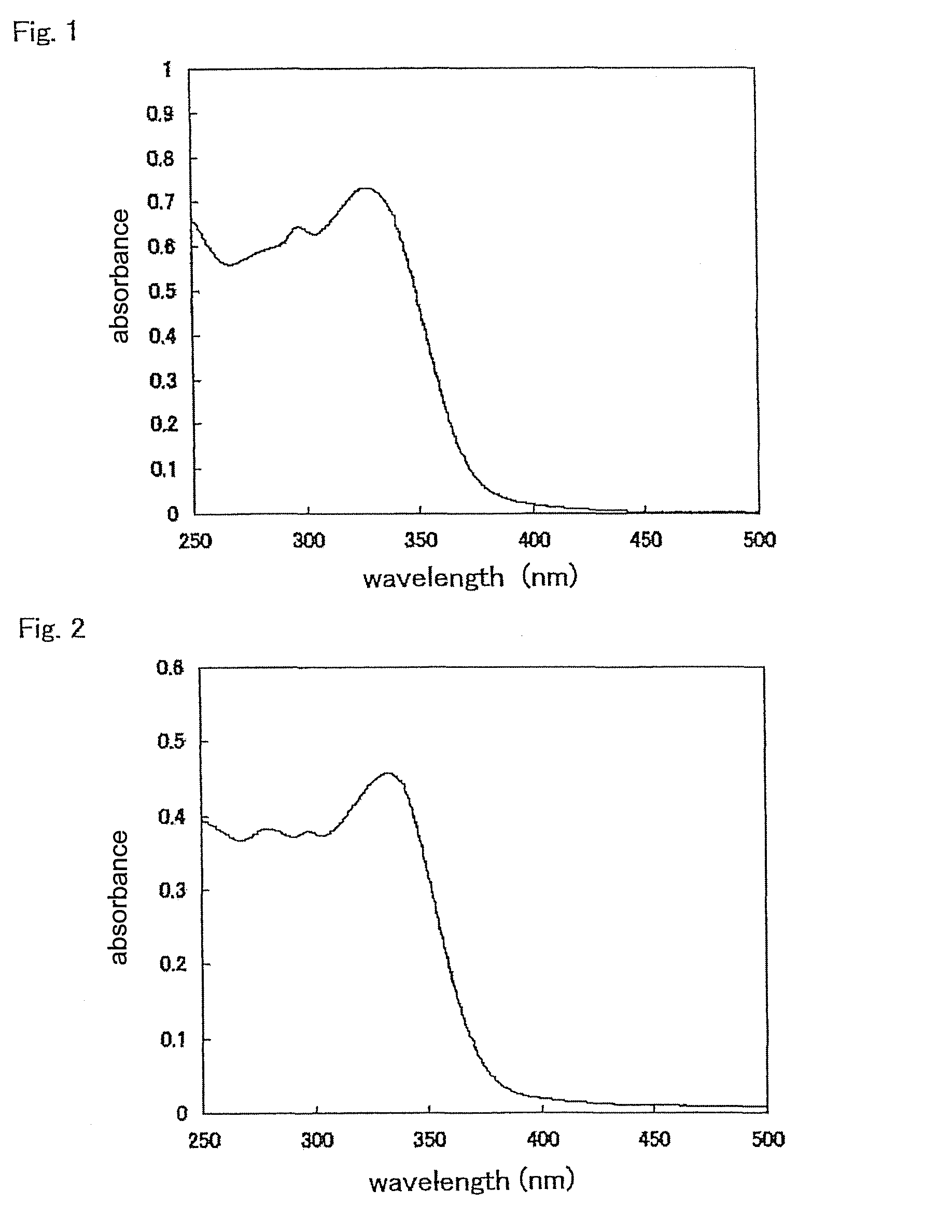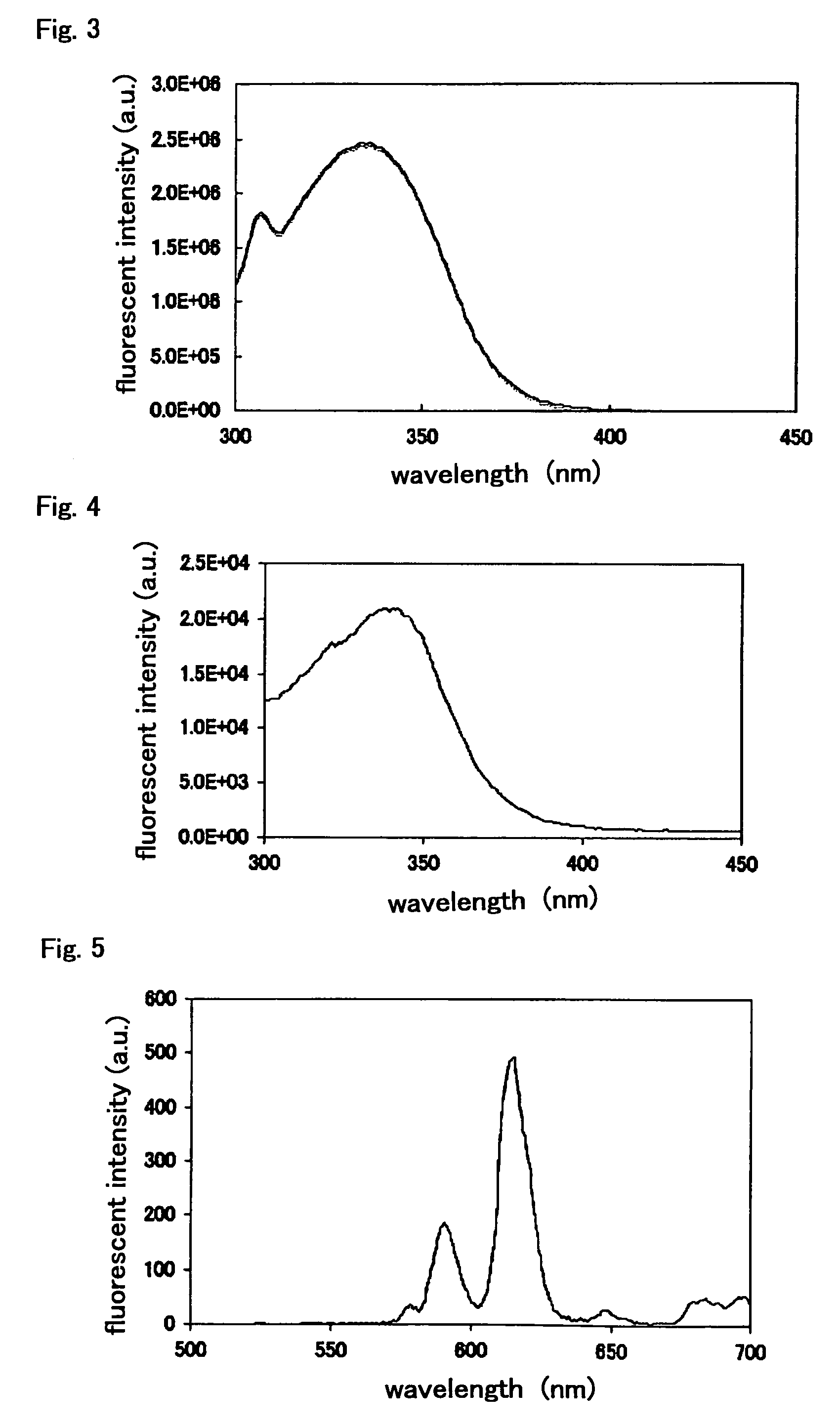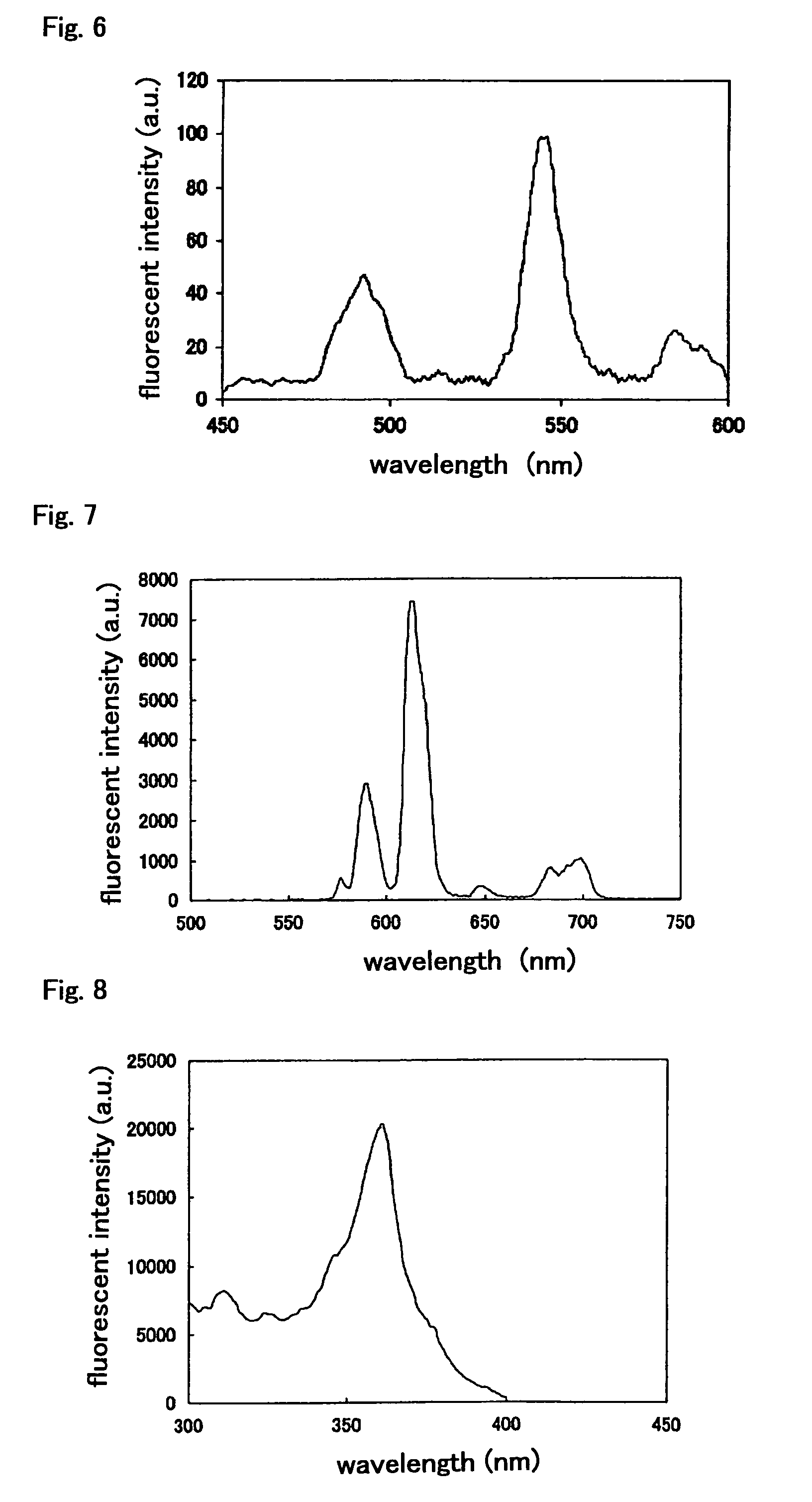Fluorescent labeling compound
a fluorescent complex and compound technology, applied in the field of rare earth metal fluorescent complexes, can solve the problems of radioisotope labeling, although highly sensitive, and the risk of storage, use and disposal, and achieve the effects of sufficient fluorescent intensity, long fluorescent lifetime, and easy formation of complexes
- Summary
- Abstract
- Description
- Claims
- Application Information
AI Technical Summary
Benefits of technology
Problems solved by technology
Method used
Image
Examples
example 1
(1) Preparation of 2,6-bis-(3-methyl-pyrazol-1-yl)-pyradine [Compound 1 (Hereinafter the Compound Numbers are the Same as Those of the Production Chart)]
[0165]3-Methyl pyrazole (9.85 g, 120 mmol) was dissolved in 150 mL of dry THF, followed by the addition of potassium (4.7 g, 120 mmol) and the mixture was treated at 60° C. until no potassium could be detected, then the reaction mixture was allowed to cool to room temperature. To the solution was added 2,6-dichloro pyridine (4.46 g, 30 mmol), refluxed for 4 days, allowed to cool down, and water (75 mL) was added to the solution. THF solvent was distilled out under reduced pressure, and the precipitate was separated by suction filtration. The precipitates were washed with water to obtain the desired product. The yield was 85.5%. 1H-NMR confirmed the production of the desired compound.
[0166]1H-NMR (CDCl3, 400 MHz): δ 2.41 (s, 6H), 6.33 (d, J=2.4 Hz, 2H), 8.38 (d, J=2.4 Hz, 2H), 9.08 (s, 2H).
example 2
(2) Preparation of 2,6-bis(3-bromo methyl-pyrazol-1-yl)-pyradine [Compound 2]
[0167]The compound 1 (2.16 g, 9 mmol) obtained in Example 1 and N-bromo succinimide (3.2 g, 18 mmol) were added to carbon tetrachloride (200 mL). Benzoyl peroxide (50 mg) was added to this mixture, and it was refluxed for 20 hrs. The reaction solution was allowed to cool to room temperature, and further cooled down with water. The solid was separated by suction filtration, and the filtrate was condensed under reduced pressure until the volume of the solvent became 10-20 mL. The remaining solution was cooled down in a freezer (1 hr), the resulting precipitate was separated by suction filtration, and washed with hexane. After drying in vacuo for 1 hr, it was recrystallized from carbon tetrachloride solution, and the desired product was obtained after washed with hexane and dried under reduced pressure. The yield was 30.1%. 1H-NMR confirmed the production of the desired compound.
[0168]1H-NMR (CDCl3, 300 MHz): ...
example 3
(3) Preparation of 2,6-bis-(3-[(N-ethoxycarbonylmethyl)-aminomethyl]-pyrazol-1-yl)-pyradine [Compound 3]
[0169]The compound 2 (0.76 g, 2.0 mmol) obtained in Example 2 and glycine ethyl ester hydrochloride (1.4 g, 10 mmol) were added to dry acetonitrile (150 mL). Then, potassium carbonate (2.1 g, 15 mmol) was added to the solution, and it was refluxed for 24 hrs with stirring. The resulting precipitate was separated by suction filtration, washed with a small volume of chloroform, and the solvent was evaporated from the filtrate under reduced pressure. The resulting solid was again dissolved in 200 mL of chloroform, and then washed with 10% aqueous solution of sodium chloride (200 mL×3). The organic phase was dried over sodium sulfate and the solvent was evaporated under reduced pressure. The product was purified by the thin layer chromatography method (chloroform:methanol=95:5) to obtain the desired product. The yield was 16.2%. 1H-NMR confirmed the production of the desired compound....
PUM
| Property | Measurement | Unit |
|---|---|---|
| wavelength | aaaaa | aaaaa |
| excitation wavelength | aaaaa | aaaaa |
| excitation wavelength | aaaaa | aaaaa |
Abstract
Description
Claims
Application Information
 Login to View More
Login to View More - R&D
- Intellectual Property
- Life Sciences
- Materials
- Tech Scout
- Unparalleled Data Quality
- Higher Quality Content
- 60% Fewer Hallucinations
Browse by: Latest US Patents, China's latest patents, Technical Efficacy Thesaurus, Application Domain, Technology Topic, Popular Technical Reports.
© 2025 PatSnap. All rights reserved.Legal|Privacy policy|Modern Slavery Act Transparency Statement|Sitemap|About US| Contact US: help@patsnap.com



